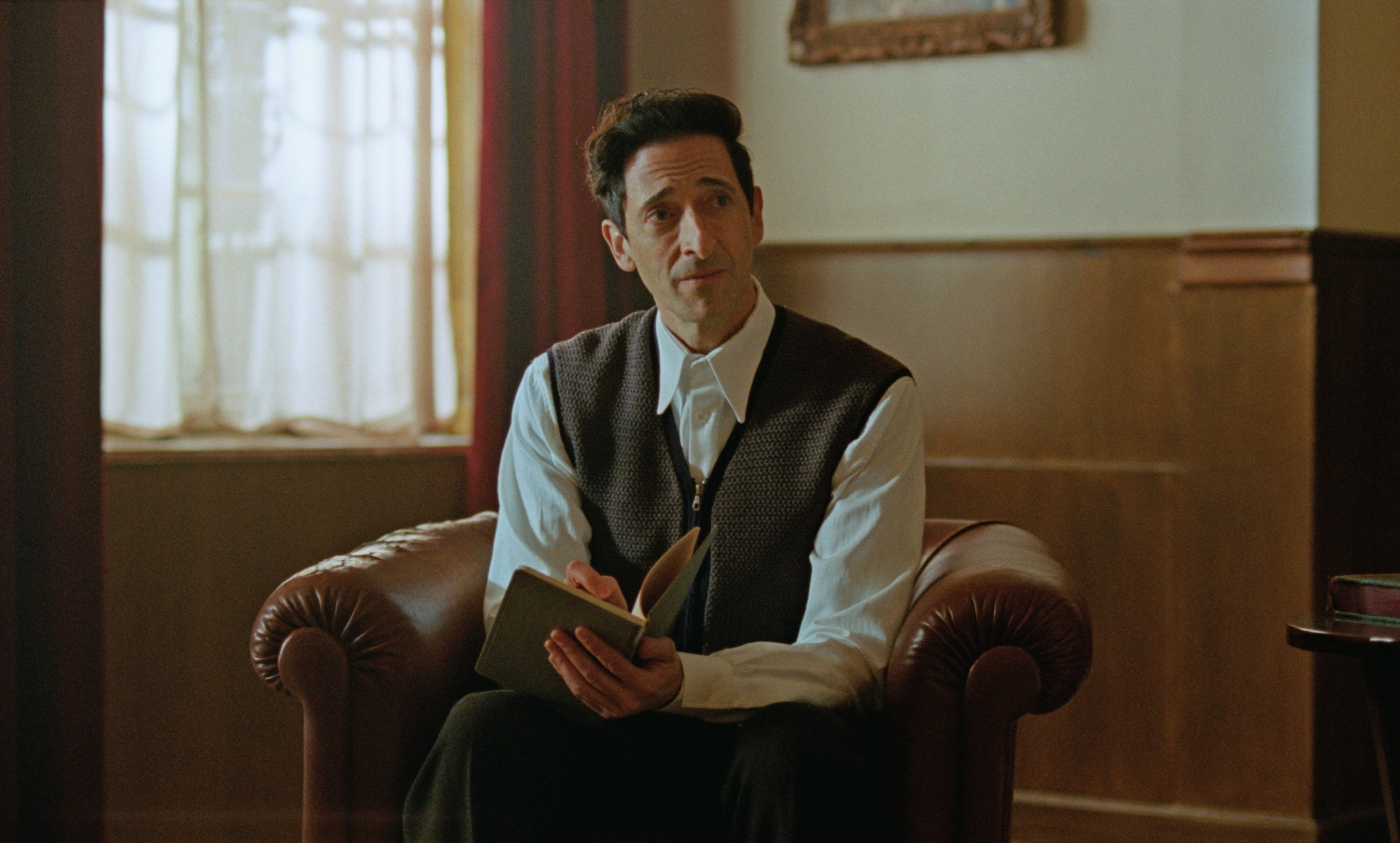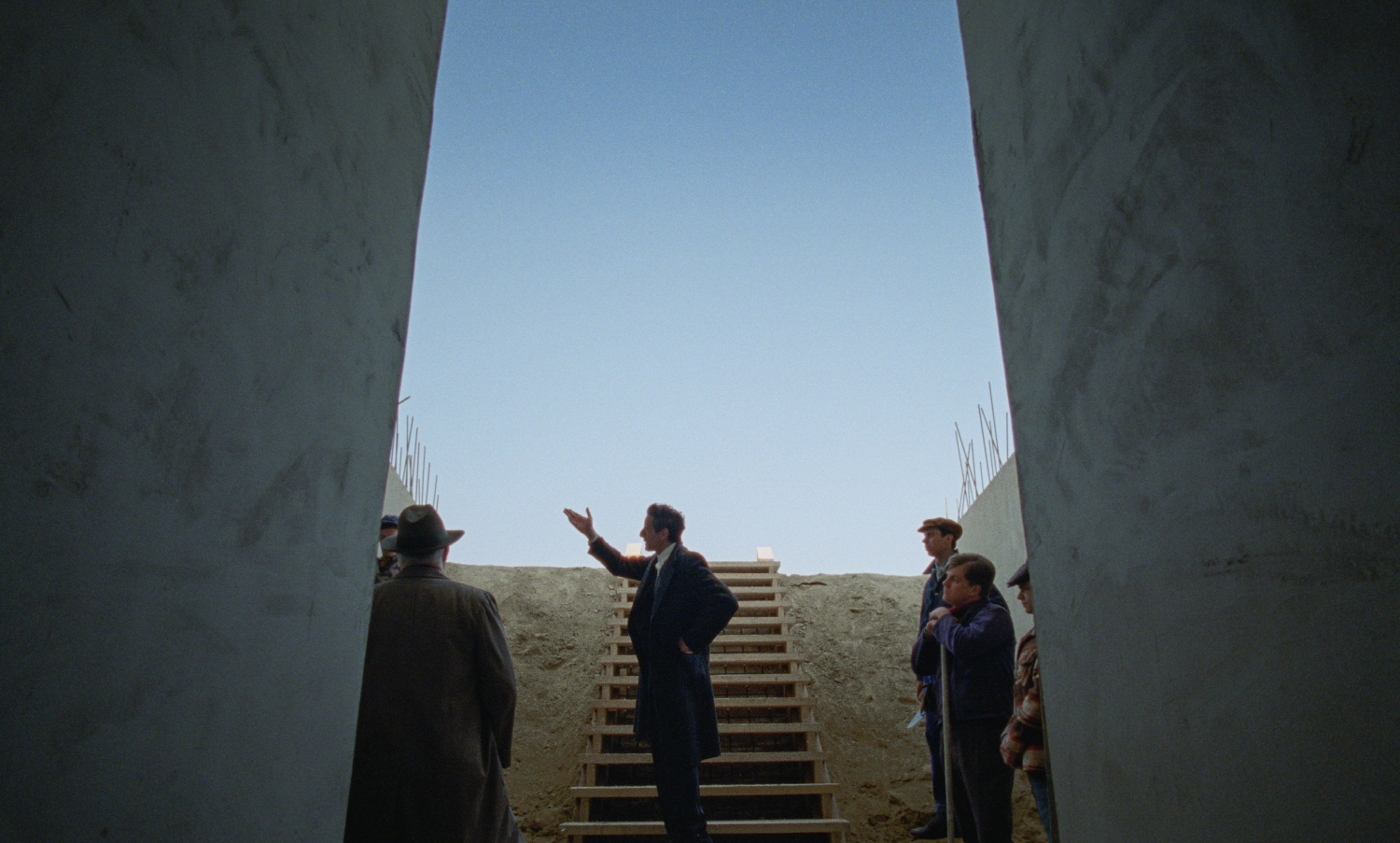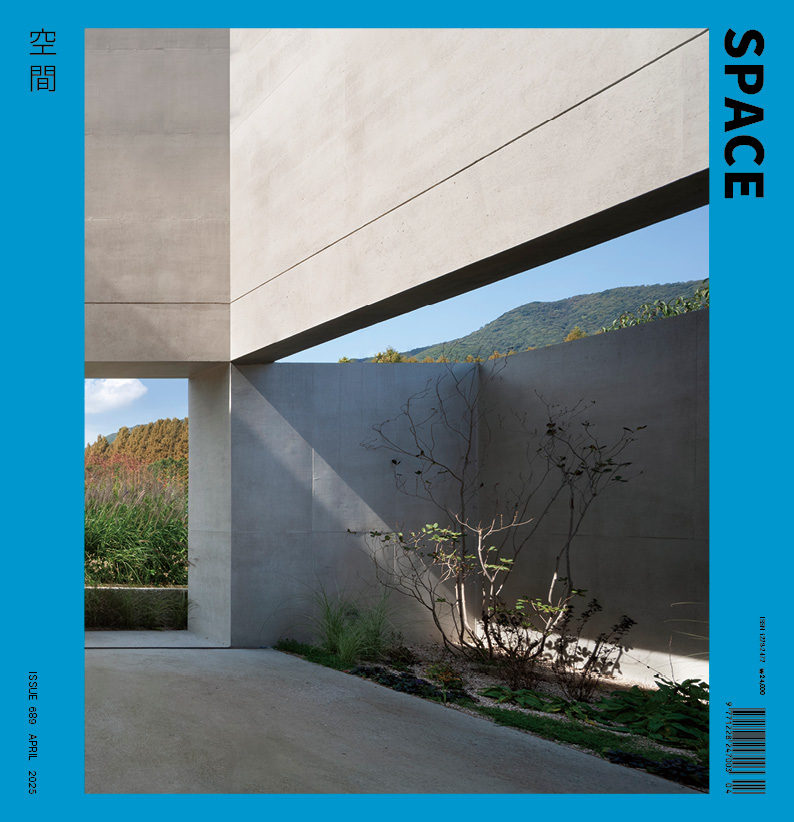SPACE April 2025 (No. 689)

Laszlo Toth, from still cut of the film The Brutalist (2025)

Construction view of the Van Buren Community Center, from still cut of the film The Brutalist (2025)
On Feb. 12, the film The Brutalist (2025) opened, portraying three decades in the life of a Jewish architect who settled in the U.S. during the 20th century. The fictional character Laszlo Toth is a Hungarian-born architect who immigrated to America after World War II. Although he made a name for himself in Europe, he lives as an immigrant in the U.S.. The film shows an inverted Statue of Liberty and quotes Goethe: ‘The illusion of being free is the most perfect form of slavery.’ For Laszlo, America is not a land of opportunity but a place that imposes constraints disguised as choice. He came to America of his own accord and accepted a project from a businessman named Harrison Lee Van Buren. Under Van Buren’s patronage, he designs a Brutalist-style community centre, only to face a crisis when construction is halted due to funding issues.
The film captures an architect’s obsessive drive to impose order on the world and make it physically manifest. When Van Buren asks Laszlo why he chose architecture as his profession, Laszlo replies, ‘The best way to explain a cube is to construct one.’ This implies that the motivating force behind the act of building goes beyond functionality or utility. Brutalist architecture presents itself as functional and efficient, yet its formal language is strikingly monumental. While Laszlo’s community centre includes various amenities for local residents, its windowless exterior seems designed mainly to showcase the dramatic play of light within. Throughout the construction period, Laszlo tries to keep the ceiling height as tall as possible, even at the expense of his own fees, despite there being no real need. It serves only as a monument to his aesthetic ideals.
Yet the process of realising this creative power continually pushes the architect himself into greater subordination. Although Van Buren pledges full support, he also wields control and pressure. Compromises to cut costs and difficulties in receiving fair compensation corner Laszlo more and more. After a train accident leads Van Buren to cancel the project, Laszlo cannot continue construction on his own. During the film, he becomes increasingly powerless, including in sexual terms: he avoids intercourse at a brothel and loses control over his sexual relationship with his wife. In one later scene, Van Buren literally positions himself over Laszlo, a blunt illustration of the architect-client power dynamic. In pursuing his ideals, the architect becomes the most vulnerable figure of all.
When Van Buren disappears, the film offers an open ending and transitions to an epilogue. Laszlo eventually completes the community centre but is now elderly and confined to a wheelchair. In her congratulatory speech, Zofia calls the building a symbol of the Jewish experience, though it is unclear whether that was ever Laszlo’s intention. His goal was purely aesthetic, yet his work is reinterpreted by others—a continuation of his life’s pattern of being forced into choices regardless of his own will. The final statement, ‘The destination was more important than the process,’ carries extra weight. The building still stands firm, but one wonders what toll it took on him along the way.





